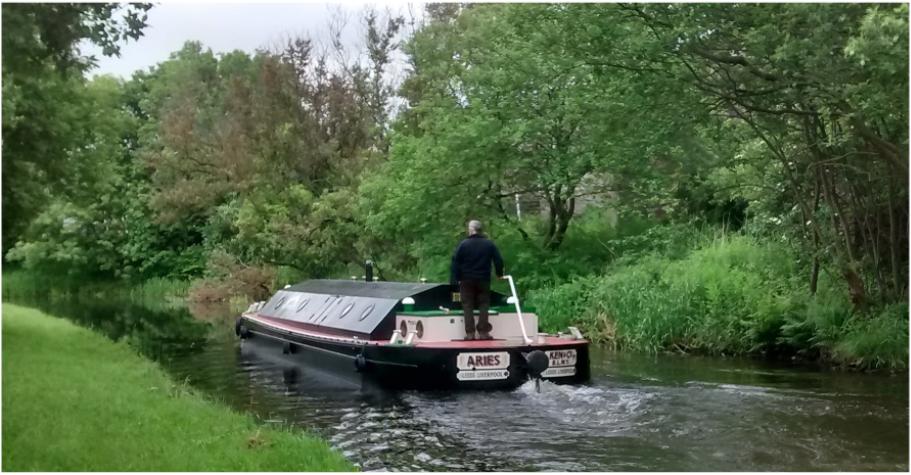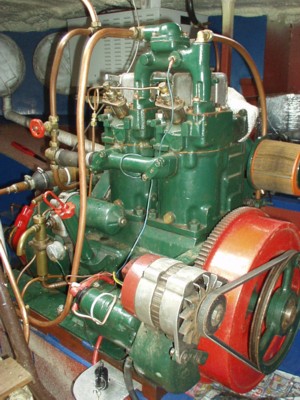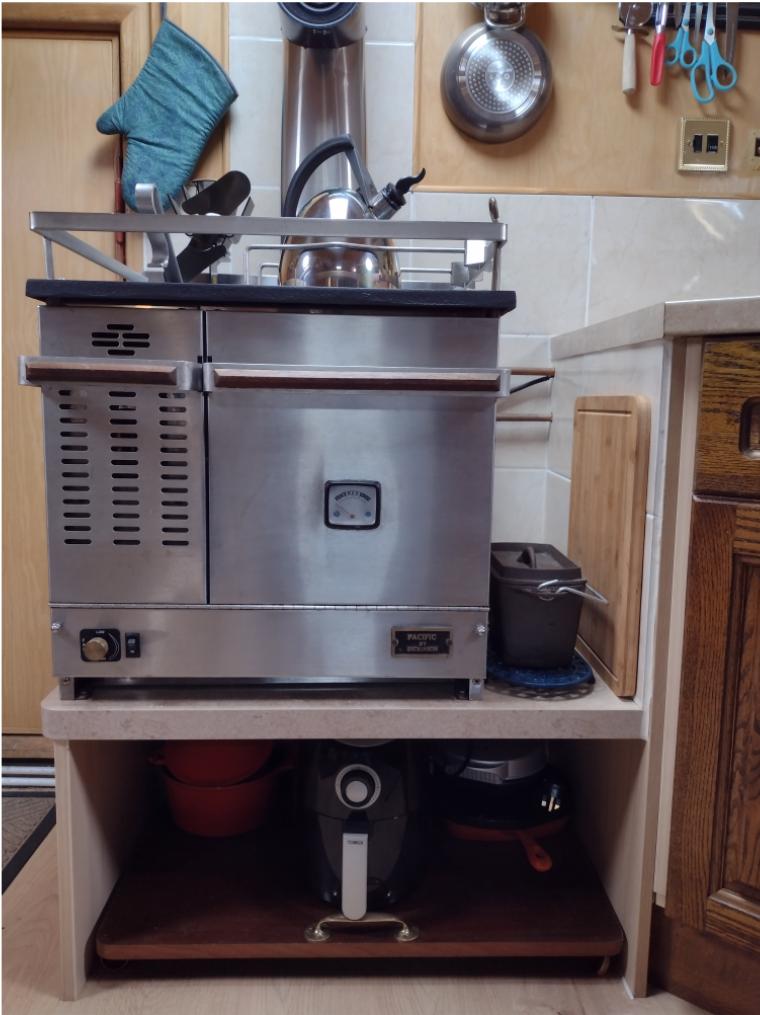
Page last updated 21st September, 2024
FOR SALE - Reduced to £120,000 ono
'Aries' is a 52ft x 12ft, modern build, 'in the style of' a Leeds & Liverpool 'Short Boat' and mimics (in steel) the shape of the canvas covered cargo hold of the originals like Kennet (click on link to see more).
In fact, the guys from XR&D visited Skipton Waterway Festival in 2010 and, with their tape measures and cameras, recorded every accessible detail of Kennet, before starting to build Aries.

Aries has many traditional features but has modern conveniences and is fitted as a live-aboard, even though I was never likely to make her my regular home.
Steelwork is by XR&D completed in October 2010, with engineering and fit-out largely by myself (plus some joinery by Greg Birkett). Click HERE for photos or HERE for detailed specifications.
 The engine is a Petter
PJ2WM (1620cc direct injection twin cylinder) built in March 1971. I am
often told "It can't be powerful enough, surely!", but at 22.5
bhp it has more
power than many original Short Boats were built with. Those
boats were more than twice the displacement of Aries when loaded.
The engine is a Petter
PJ2WM (1620cc direct injection twin cylinder) built in March 1971. I am
often told "It can't be powerful enough, surely!", but at 22.5
bhp it has more
power than many original Short Boats were built with. Those
boats were more than twice the displacement of Aries when loaded.
Click HERE to see the engine running.
Of course at 1200 rpm it will be producing as much torque as many similar size modern engines would. Those engines claim much higher maximum power output, which they achieve at high engine speeds. After all, it's torque at low revs rather than maximum power that is important for turning a propeller.
Aries is gas-free with cooking by Dickinson diesel cookstove (see below) and electricity: Induction Hob, Combination Oven, Air Fryer, Slow Cooker, Electric Kettle etc..
Direct 'space' heating is by Dickinson diesel Cookstove (galley), as well as oil stoves in both the saloon and the fore cabin (see below). Domestic hot water is by waste engine heat, Eberspacher diesel Boiler and, when a shore supply is available, Air Source Heat Pump. Underfloor Central Heating is by Eberspacher or heat pump to a heat store, from which it is circulated at a lower temperature by mixing with the returning water. The Eberspacher or heat pump also supplies radiators in the saloon and bathroom when rapid warm-up is required. Unfortunately, all of the components are of foreign origin as there are no British units available.
I was keen to use a range of heating methods according to availability of fuels as well as
minimizing the waste heat dumped into the canal.
In the galley, the Dickinson Pacific cookstove provides space heating as well as hotplate and oven. Furthermore, it does so with minimal use of electricity. The cookstove can also benefit from fan assist when it needs to work hard. Designed for use on diesel fuel, it seems to be capable of burning a mixture of diesel and waste oil (when available).
In the saloon, I originally installed an Evergreen multi fuel stove to use when free wood was available but realised that it was too much of a chore (for an elderly chap) and, except when burning really dry, clean wood, was not very environment friendly. I replaced it with a Bubble oil stove. I also have a small Refleks diesel Stove, for the fore cabin. Both these two stoves and the Dickinson cookstove will run OK on a diesel/waste oil mixture or on HVO when or if it becomes more widely available at a realistic price.
Surprisingly, even when the stoves are running on the mixture incorporating waste oil, there is no visible smoke produced so I am confident that they are more environmentally friendly than multifuel stoves burning coal and/or wood which often do emit visible, noxious smoke. As you might expect, the stoves do 'carbon-up' in the burner pot more quickly than on straight diesel.
Finally, there is also an Eberspacher boiler for those occasions when shore line is not available and I just want programmable, thermostatically controlled heating without running the genny and without any input from me.
On the electrics side, it is Victron for the Inverter/Charger and battery monitoring and Sterling for boosting battery charging from the propulsion engine and also charging/maintaining the forward battery bank.
There is a large bank of domestic batteries so that moderate amounts of electric cooking won't always require the engine or a generator to be running. The Victron Unit will be capable of topping up any incoming power (shoreline or a generator) with an additional 3kw for short periods.
There are also a couple of small solar panels that provide a trickle charge to the domestic batteries but these are not state of the art so would benefit from an upgrade. The controller can handle up to 40 amps so the panels could easily be upgraded to generate a more useful charge.
When the weather discourages use of the cookstove, a double induction hob and combination oven are available in addition to small electrical appliances such as kettle, pop-up toaster, air fryer, coffee maker and slow cooker.
N.B. The original having recently been removed, there is currently no generator installed. I have explored options to fit a new one but this is not possible in the immediate future due to supply delays. In the longer term, a brand new Beta Marine 4kW generator would cost around £8,500, installed and including vat. I have reduced the asking price by £10k to allow for this.
I have two second-hand 230v AC generators, designed to be fitted to the main engine, in addition to or in place of the 12v alternator. One is a 3.5kW Dynawatt unit, the other a 5kw Seapower. They were both purchased by me 'in good faith' and without warranty. The buyer's choice of these is available on the same basis free of charge. Availability of AC power while the boat is going along would be very limited and it should be realised that running the propulsion engine when stationary would be considerably noisier that using a generator surrounded by sound insulation.
If clicking on the Email Gif doesn't take you to your email system, hover over it and read the email address from the bottom left hand corner of your screen.